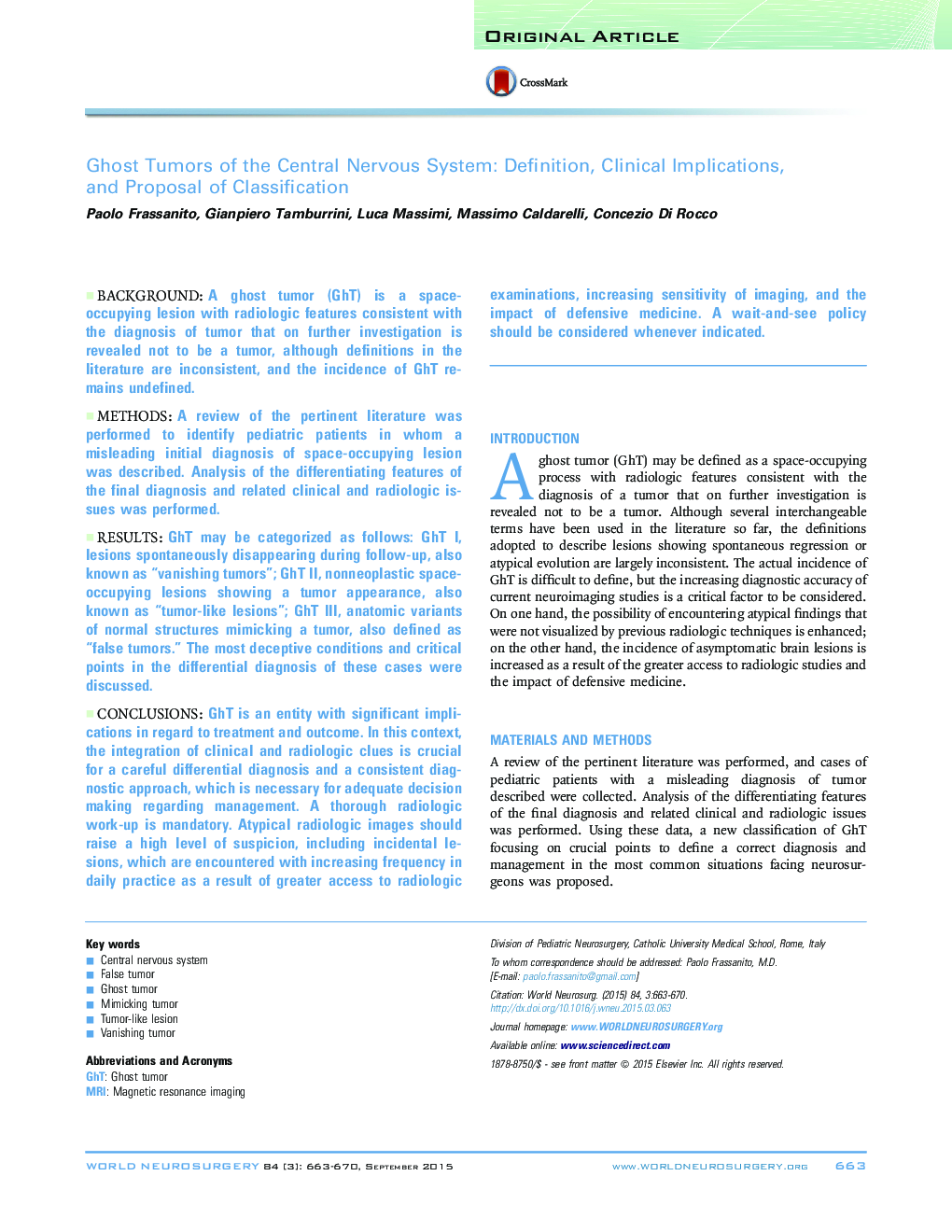| Article ID | Journal | Published Year | Pages | File Type |
|---|---|---|---|---|
| 6045365 | World Neurosurgery | 2015 | 8 Pages |
BackgroundA ghost tumor (GhT) is a space-occupying lesion with radiologic features consistent with the diagnosis of tumor that on further investigation is revealed not to be a tumor, although definitions in the literature are inconsistent, and the incidence of GhT remains undefined.MethodsA review of the pertinent literature was performed to identify pediatric patients in whom a misleading initial diagnosis of space-occupying lesion was described. Analysis of the differentiating features of the final diagnosis and related clinical and radiologic issues was performed.ResultsGhT may be categorized as follows: GhT I, lesions spontaneously disappearing during follow-up, also known as “vanishing tumors”; GhT II, nonneoplastic space-occupying lesions showing a tumor appearance, also known as “tumor-like lesions”; GhT III, anatomic variants of normal structures mimicking a tumor, also defined as “false tumors.” The most deceptive conditions and critical points in the differential diagnosis of these cases were discussed.ConclusionsGhT is an entity with significant implications in regard to treatment and outcome. In this context, the integration of clinical and radiologic clues is crucial for a careful differential diagnosis and a consistent diagnostic approach, which is necessary for adequate decision making regarding management. A thorough radiologic work-up is mandatory. Atypical radiologic images should raise a high level of suspicion, including incidental lesions, which are encountered with increasing frequency in daily practice as a result of greater access to radiologic examinations, increasing sensitivity of imaging, and the impact of defensive medicine. A wait-and-see policy should be considered whenever indicated.
